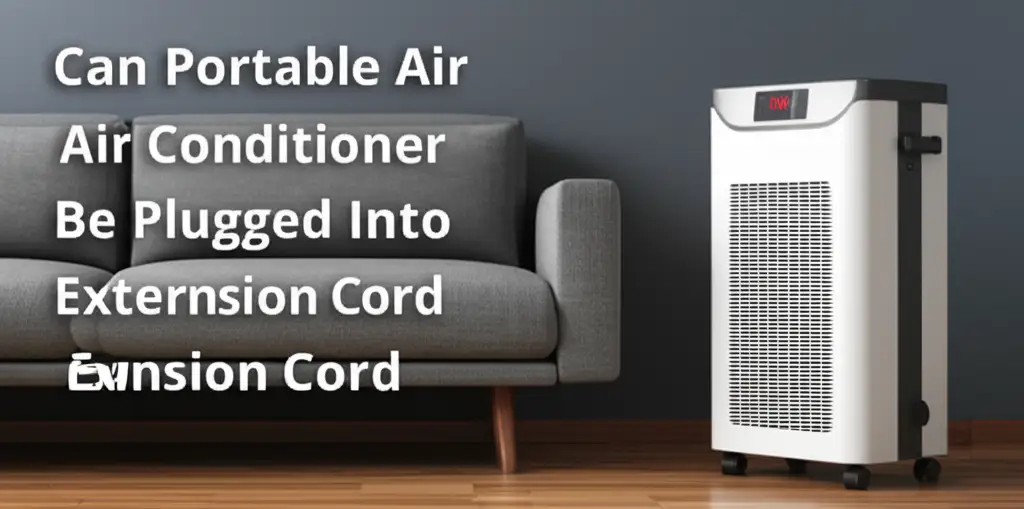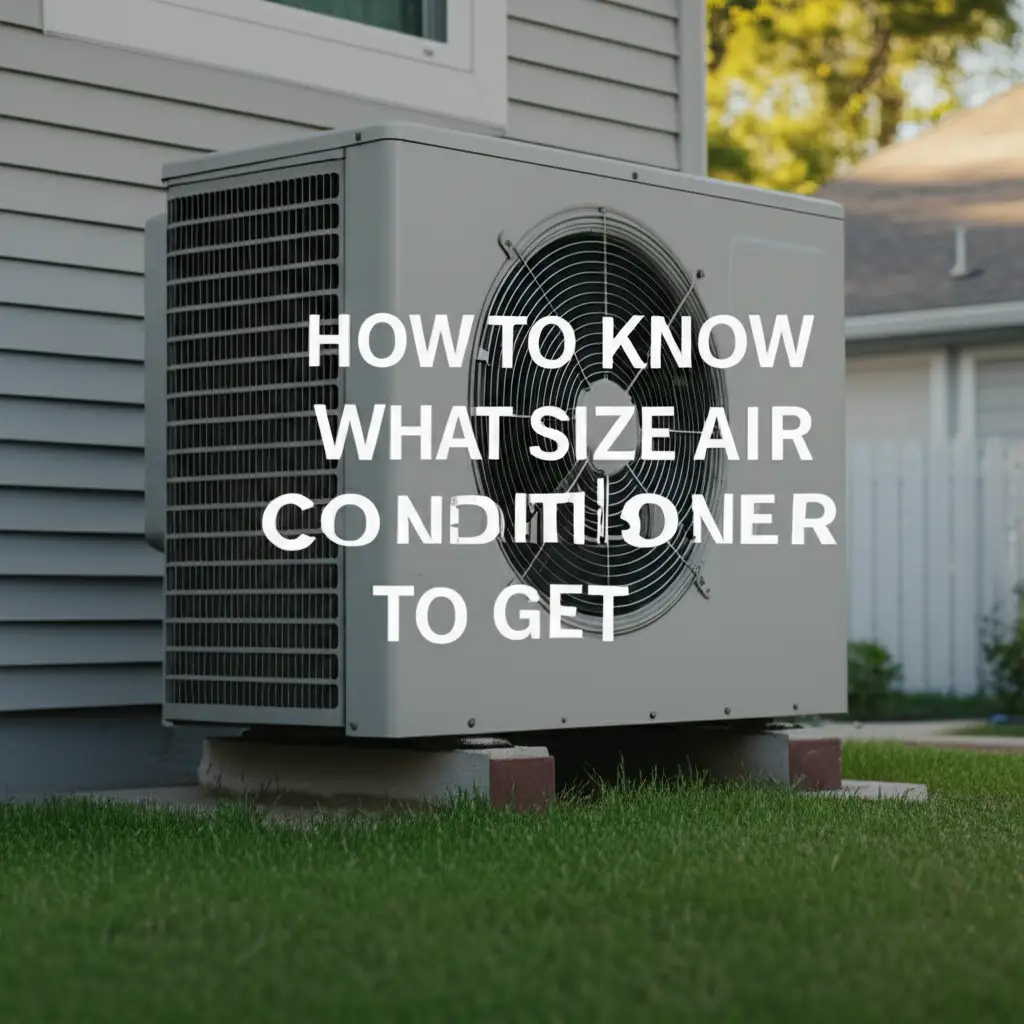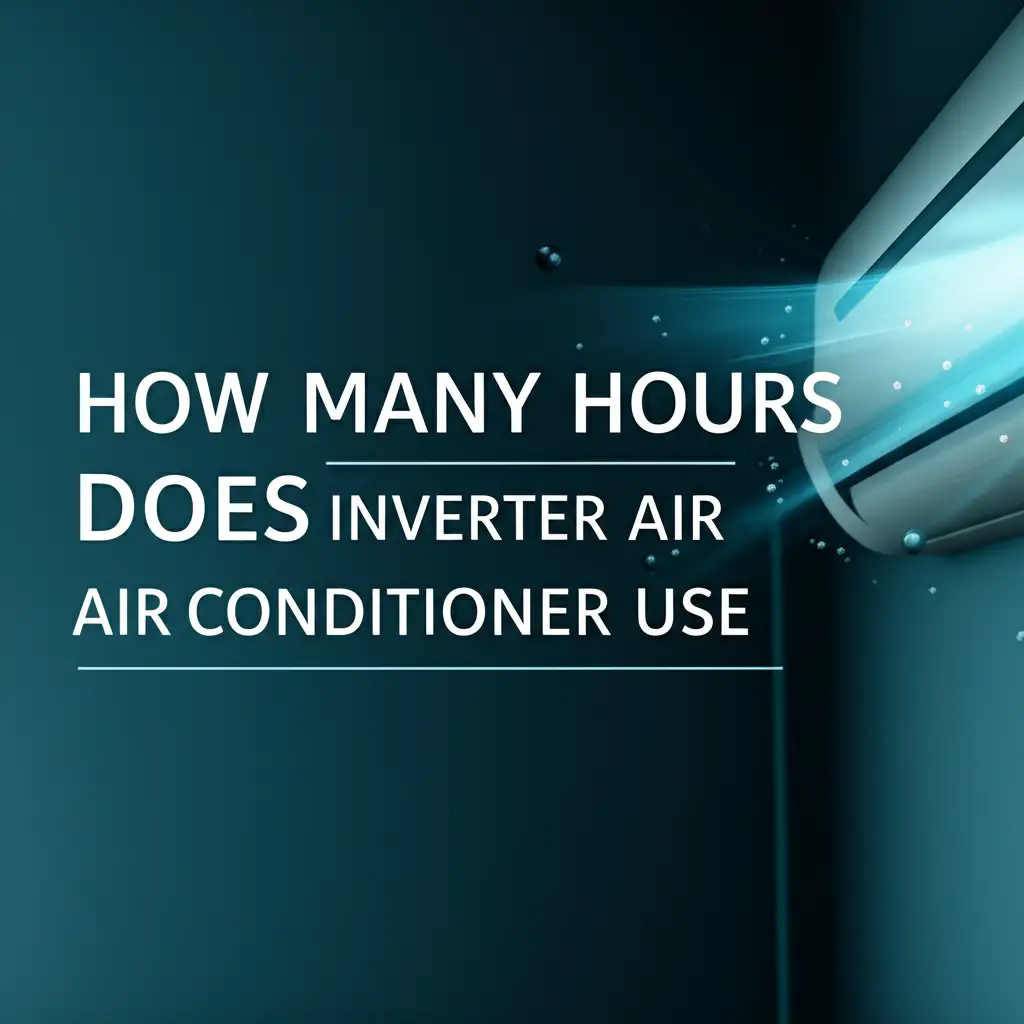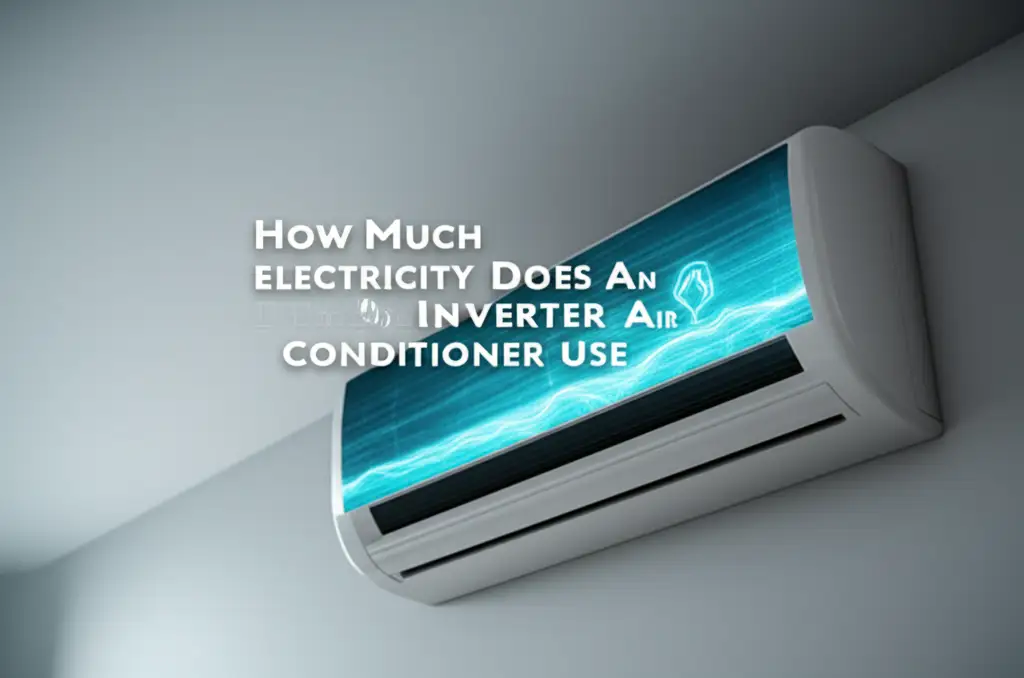· Todd Martin · Cooling Solutions · 20 min read
Can You Use Portable Air Conditioner Without Hose
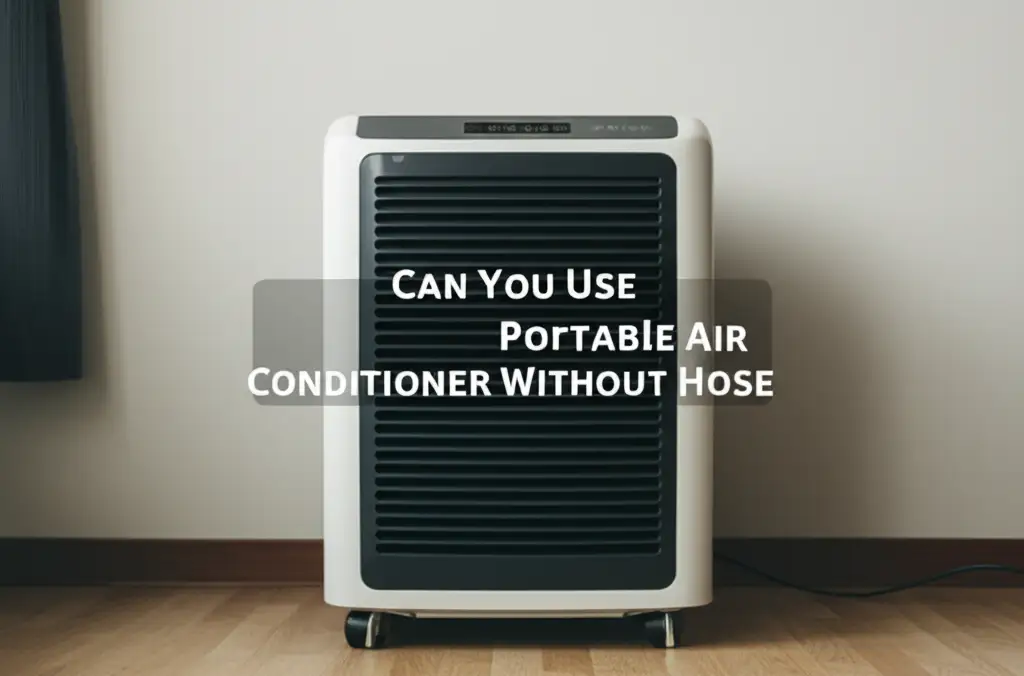
Can You Use Portable Air Conditioner Without Hose?
Imagine a hot summer day. You want to cool your space without the hassle of a window kit or venting a hose outside. It is tempting to think a portable air conditioner could simply sit in your room and work magic. Many people wonder if they can truly use a portable air conditioner without a hose. This question touches on the core functionality of these cooling units.
Understanding how portable air conditioners work reveals why a hose is usually non-negotiable. These devices remove heat and humidity from your indoor air. This removed heat must go somewhere to properly cool your room. I will explain the critical role of the exhaust hose. I will also explore different types of cooling devices often confused with true portable air conditioners. This article will guide you through the functions, differences, and limitations of various cooling solutions. You will learn the best choice for your needs, whether you prioritize vent-free operation or powerful cooling.
Takeaway:
- True portable air conditioners always require a hose to vent hot air outside.
- Devices advertised as “hose-less” are usually evaporative coolers or “swamp coolers,” not true air conditioners.
- Evaporative coolers cool by adding moisture to the air; they work best in dry climates.
- Using a portable AC without a hose defeats its purpose and can increase room temperature.
- Consider your climate and cooling needs before choosing a portable cooling device.
Can you use a portable air conditioner without a hose?
No, you cannot use a true portable air conditioner without a hose. A portable air conditioner functions by extracting heat and moisture from your indoor air. This hot, humid air must be expelled outside your living space through an exhaust hose. Without a hose, the unit would simply dump the removed heat back into the room, making it hotter, not cooler.
The Indispensable Role of the Exhaust Hose in Portable ACs
Understanding how a portable air conditioner operates helps clarify the hose’s importance. A portable AC works like a refrigerator, but for your room’s air. It uses a refrigeration cycle to absorb heat from the indoor environment. This process involves a refrigerant that cycles through coils.
As the refrigerant absorbs heat, it turns into a gas. This gas then passes through a compressor, which increases its pressure and temperature. From there, it moves to the condenser coil. The hot refrigerant gas releases its heat to the surrounding air at this coil. This hot air must then be expelled from your room.
The exhaust hose provides the pathway for this hot air. If the hot air stays in your room, it cancels out the cooling effect. In essence, the portable AC would become a heater, not a cooler. This fundamental principle makes the hose a mandatory component for any true portable air conditioner.
Portable ACs typically come with a window kit. This kit secures the exhaust hose in a window opening. The kit ensures hot air vents outside and does not re-enter the room. Some people might wonder about alternative venting methods, such as through a wall or even a garage door, but the core need for venting remains. You can learn more about proper venting methods, like how to install a portable air conditioner vent in a wall, to ensure efficient operation.
The hose also manages moisture. As warm air cools, moisture condenses out of it. This condensate often collects in a water tank or is self-evaporated by the unit. The exhaust hose helps expel some of this moisture as humid air. Proper drainage is also key to a portable AC’s performance. Issues like a portable air conditioner not draining water can affect its efficiency.
Portable Air Conditioners Versus Evaporative Coolers: A Key Distinction
Many people confuse portable air conditioners with evaporative coolers. This confusion often leads to the question about hose-less operation. It is vital to understand their distinct operating principles. A true portable air conditioner uses a refrigeration cycle. It removes both heat and humidity from the air.
In contrast, an evaporative cooler, often called a “swamp cooler,” cools air through evaporation. It draws in warm, dry air over water-saturated pads. As the water evaporates, it absorbs heat from the air. This process cools the air, but it also adds moisture to it. Evaporative coolers do not have a compressor or use refrigerants. They do not generate hot exhaust air that needs to be vented. This is why they do not require a hose.
Evaporative coolers are effective in specific climates. They perform best in hot, dry environments where humidity levels are low. In such conditions, the added moisture can feel refreshing. However, in humid climates, an evaporative cooler will be ineffective. It will make the room feel muggy and uncomfortable. The added moisture can also contribute to mold growth.
A portable air conditioner’s ability to dehumidify makes it suitable for all climates. It actively removes moisture, creating a drier, cooler environment. This dehumidification process is a key benefit of a portable AC. This is especially true if you live somewhere with high humidity. Understanding this difference helps you choose the right device for your home.
The Problem with Operating a Portable AC Without a Vent
Attempting to run a portable air conditioner without its exhaust hose is counterproductive. As explained, the unit generates hot air as it cools. This hot air must escape the room. Without a hose, the hot air simply re-circulates back into the room.
Imagine trying to cool a room with an open refrigerator door. The refrigerator’s coils release heat into the room. While the inside of the fridge gets cold, the room itself gets warmer. A portable AC without an exhaust hose behaves similarly. The cooling coil part gets cold, but the heat removed from the air, plus the heat generated by the compressor and motor, is all released back into your space.
This setup makes the room hotter, not cooler. You will feel no actual cooling benefit. In fact, your energy consumption will increase for no gain. The unit will also work harder, potentially shortening its lifespan. It might even trigger safety mechanisms, causing the unit to shut off. You can learn more about why a portable air conditioner turns off by itself.
Furthermore, a portable AC also removes humidity. This removed moisture often collects in a water tank inside the unit. Some units have a self-evaporating system that expels moisture through the exhaust hose. If there is no hose, this moisture has nowhere to go. It will either condense inside the unit, leading to overflow, or get released back into the room. This can cause significant water issues. You might find your portable air conditioner blowing out water. This condition defeats the purpose of dehumidification. It also creates a damp environment, which encourages mold and mildew.
Exploring Vent-Free Cooling Alternatives: When No Hose is an Option
While true portable air conditioners demand a hose, several cooling devices offer vent-free operation. These alternatives provide different levels of cooling and are suitable for specific situations. Understanding their mechanisms helps you make an informed choice.
1. Evaporative Coolers (Swamp Coolers): These are the most common “hose-less” cooling devices. They work by evaporating water, which draws heat from the air. Evaporative coolers are energy-efficient and ideal for arid climates. They add moisture to the air, which can be beneficial in dry conditions. However, in humid environments, they increase humidity. This makes the air feel sticky and uncomfortable. They can also exacerbate respiratory issues for some individuals.
2. Personal Air Coolers: These are compact versions of evaporative coolers. They are designed for individual use, like on a desk or bedside table. They cool a very small area around the user, not an entire room. They use water and often ice to create a small zone of cooler, humidified air. These devices are great for spot cooling but lack the power to significantly lower room temperature.
3. Fans: Simple fans, including tower fans, box fans, and ceiling fans, do not cool the air. Instead, they create a wind chill effect by moving air across your skin. This speeds up the evaporation of sweat, making you feel cooler. Fans are excellent for improving air circulation and are very energy-efficient. They are a good supplement to other cooling methods. They are not a replacement for air conditioning in extreme heat.
4. Dehumidifiers: While not designed for cooling, dehumidifiers remove moisture from the air. Lowering humidity can make a hot, humid room feel more comfortable, even if the temperature remains the same. A dehumidifier works by drawing in moist air and condensing the water vapor. This process often generates a small amount of heat. If you struggle with humidity more than extreme heat, a dehumidifier might offer some relief.
These vent-free options offer varying degrees of comfort. They are not substitutes for the powerful cooling and dehumidification of a true portable air conditioner. Choose the right device based on your climate, specific cooling needs, and space limitations.
Understanding the Energy Efficiency and Climate Impact of Different Cooling Solutions
The energy consumption and environmental impact vary significantly among cooling devices. A portable air conditioner and an evaporative cooler have different energy footprints. Knowing these differences helps you make a sustainable choice for your home.
Portable Air Conditioners: These units are generally more energy-intensive than evaporative coolers or fans. They use a compressor and refrigerant, which consume more electricity. The energy cost to run a portable air conditioner depends on its BTU rating and how often it runs. Higher BTU units cool larger spaces but use more power. Their energy efficiency is measured by their Energy Efficiency Ratio (EER) or Seasonal Energy Efficiency Ratio (SEER). A higher EER/SEER indicates better efficiency.
Portable ACs also contribute to global warming through their refrigerant. While newer models use more environmentally friendly refrigerants, leaks can still release greenhouse gases. Proper maintenance and disposal are important to minimize this impact. Regularly cleaning your portable air conditioner can help maintain its efficiency and extend its lifespan. This also helps prevent issues like your portable air conditioner filling with water quickly, which can hinder performance.
Evaporative Coolers: These devices are significantly more energy-efficient than portable air conditioners. They use a fan and a small pump to circulate water, consuming much less electricity. This makes them an eco-friendly option, especially in dry climates. They do not use refrigerants, so they have no direct contribution to greenhouse gas emissions.
However, evaporative coolers consume water. In regions facing water scarcity, this water usage can be a concern. The environmental impact shifts from electricity consumption to water resources. They also increase indoor humidity, which can sometimes lead to mold or mildew issues if not properly managed.
Fans: Fans are the most energy-efficient cooling option. They consume very little electricity compared to AC units. They simply circulate air, providing a feeling of coolness rather than actual air temperature reduction. Their environmental impact is minimal.
When selecting a cooling solution, consider your local climate and energy costs. In humid regions, a portable AC is more effective despite higher energy use. In dry areas, an evaporative cooler offers efficient, environmentally friendly cooling. Fans are always a good supplemental option for improving comfort.
Installation and Maintenance Considerations for Portable ACs
While the focus is on whether you can use a portable air conditioner without a hose, understanding proper installation and maintenance is key for those that do require one. Proper setup ensures efficiency and longevity. Ignoring these steps can lead to poor performance or even damage.
Installation: The most crucial part of portable AC installation is securing the exhaust hose. The unit comes with a window kit. This kit fits into most standard vertical or horizontal windows. You attach the hose to the unit and the window adapter, then seal the window opening. This prevents hot air from outside, or the hot exhaust air, from re-entering the room. For challenging window types, like vertical windows, specific strategies apply. For those with special window requirements, there are guides on how to use a portable air conditioner with vertical windows.
Ensure the hose is as short and straight as possible. Bends or a long hose create back pressure, reducing efficiency. Some units may even come with dual hoses, requiring slightly different installation steps, such as those detailed for how to install a Hisense portable air conditioner dual hose.
Drainage: Portable ACs remove moisture from the air. This water collects in a pan or bucket within the unit. Many units have a self-evaporating feature that expels most of this moisture through the exhaust hose. However, in very humid conditions, the pan may still fill. Regular draining is necessary to prevent overflow. Some units have a continuous drain option, allowing you to attach a hose for constant drainage. Neglecting drainage can lead to the unit shutting off or blowing out water. Understanding why your portable air conditioner is not draining water can help prevent issues.
Maintenance: Routine maintenance keeps your portable AC running efficiently.
- Filter Cleaning: The air filter needs regular cleaning or replacement. A clogged filter restricts airflow, reduces cooling efficiency, and can cause the unit to work harder. Dirty filters can also lead to issues like your portable air conditioner keeping shutting off.
- Coil Cleaning: The evaporator and condenser coils can accumulate dust and grime over time. This reduces their ability to exchange heat. Cleaning these coils improves performance.
- Water Tank Cleaning: If your unit has a water tank, clean it regularly to prevent mold and mildew growth. This is especially important for maintaining air quality. Specific instructions on how to clean a portable air conditioner water tank are helpful.
Proper installation and consistent maintenance ensure your portable air conditioner provides optimal cooling. These practices help avoid common operational problems and extend the life of your appliance. They also ensure the unit operates safely.
Safety Concerns and Potential Issues of Misusing Portable Cooling Devices
Misusing any cooling device, especially attempting to run a portable AC without proper ventilation, poses safety risks and performance issues. Understanding these helps ensure safe and effective operation.
For Portable Air Conditioners (when misused without a hose):
- Overheating and Fire Hazard: The unit will continually generate and recirculate hot air. This can cause internal components to overheat. Overheating increases the risk of electrical faults, leading to potential fire hazards.
- Electrical Problems: An overloaded unit draws more power, potentially tripping circuit breakers or blowing fuses. Continuously tripping the breaker suggests the unit is overworking. Find out why your portable air conditioner keeps tripping the breaker.
- Moisture Damage and Mold Growth: Without venting, removed moisture has no escape. It will either cause the internal condensate pan to overflow or re-enter the room as humid air. Overflowing water can damage floors and furniture. The increased humidity in a warm environment creates ideal conditions for mold and mildew growth. This affects air quality and can cause health issues.
- Reduced Lifespan: Continuous operation under inefficient, stressful conditions shortens the unit’s overall lifespan. Components wear out faster due to excessive heat and strain.
For Evaporative Coolers (when used inappropriately):
- Increased Humidity and Discomfort: While safe, using an evaporative cooler in a humid climate will make the room feel muggy and uncomfortable. It can exacerbate respiratory issues.
- Mold and Mildew: Because they rely on water, evaporative coolers require regular cleaning. Neglecting maintenance can lead to mold and bacterial growth on the water pads and in the reservoir. These can then be released into the air.
General Safety Tips for All Devices:
- Read the Manual: Always follow the manufacturer’s instructions for installation, operation, and maintenance.
- Proper Placement: Place units on a stable, level surface. Ensure adequate clearance for airflow.
- Electrical Safety: Do not overload electrical outlets. Use appropriate extension cords if necessary, ensuring they are rated for the appliance’s power draw. Never use damaged cords.
- Regular Maintenance: Keep filters clean and check for any unusual noises or smells.
- Supervision: Do not leave units running unattended for extended periods, especially if you suspect a problem.
By adhering to proper usage guidelines, you can ensure your cooling device operates safely and efficiently. This protects both your home and your health.
Making the Right Choice: Selecting a Cooling Solution for Your Home
Choosing the best cooling device depends on several factors specific to your home and climate. Consider your local weather, the size of your space, your budget, and personal preferences. I can help you weigh these elements to make an informed decision.
1. Assess Your Climate:
- Hot and Humid Climates: If you live in an area with high humidity (e.g., coastal regions, much of the eastern US), a portable air conditioner is your best option. It actively removes both heat and moisture, providing true cooling and dehumidification. Evaporative coolers will be ineffective and make the environment feel muggier.
- Hot and Dry Climates: In arid regions (e.g., Southwestern US), an evaporative cooler can be highly effective and energy-efficient. The added moisture can even be a benefit, preventing dry skin and static electricity. Portable ACs will still work, but an evaporative cooler might be a more cost-effective and environmentally friendly choice.
2. Consider Your Space and Needs:
- Room Size: Portable ACs are rated by BTUs (British Thermal Units). Match the BTU rating to your room size for effective cooling. An undersized unit will struggle.
- Portability vs. Stationary: Do you need to move the unit between rooms often? Portable ACs offer this flexibility, but remember the hose must always be vented. If you only need spot cooling at your desk, a personal air cooler might suffice.
- Noise Level: Portable ACs can be noisier due to the compressor and fan. Evaporative coolers are generally quieter, mainly producing fan noise.
- Installation Requirements: Are you willing to install a window kit and vent a hose? If not, a true portable AC is not for you.
3. Budget and Energy Costs:
- Initial Cost: Evaporative coolers and fans are typically less expensive to purchase than portable air conditioners.
- Operating Costs: Evaporative coolers and fans are significantly cheaper to run due to lower energy consumption. A portable AC will incur higher electricity bills, especially if run continuously. You might want to consider how much a portable air conditioner costs to run before making a purchase.
4. Maintenance Commitment:
- Portable ACs require filter cleaning, drainage management, and occasional coil cleaning.
- Evaporative coolers need regular cleaning of water tanks and pads to prevent mold.
By carefully evaluating these points, you can choose a cooling solution that truly meets your needs. Whether it is the powerful dehumidification of a portable AC or the energy efficiency of an evaporative cooler, the right choice ensures comfort in your home.
Future Innovations in Portable Cooling Technology
The demand for efficient and flexible cooling solutions continues to drive innovation. While the fundamental principles of refrigeration and evaporation remain, advancements are making portable cooling devices smarter, more efficient, and potentially more versatile. I am excited to see what the future holds for this technology.
One area of innovation is increased energy efficiency. Manufacturers are constantly working to improve the EER and SEER ratings of portable air conditioners. This involves better compressor designs, more efficient fan motors, and smarter controls. The goal is to deliver more cooling power with less electricity consumption. This not only saves money for consumers but also reduces the environmental footprint.
Another exciting development is smarter connectivity. Many new portable ACs feature Wi-Fi connectivity, allowing remote control via smartphone apps. You can turn the unit on or off, adjust settings, or schedule operations from anywhere. This smart integration also allows for better energy management. Units might integrate with smart home systems to optimize cooling based on occupancy or outdoor temperatures.
Research into alternative cooling technologies is also ongoing. While not yet mainstream for portable devices, solid-state cooling (thermoelectric cooling) or advanced desiccant systems could one day offer hose-less, refrigeration-free air conditioning. These technologies are still mostly in research or niche applications, but they promise a future of truly vent-free cooling without the limitations of evaporative coolers.
Improved design and aesthetics are also a focus. Newer models are becoming sleeker and less obtrusive. This makes them blend better with home decor. Reduced noise levels are also a continuous improvement target, making portable ACs more comfortable to live with.
Finally, manufacturers are exploring ways to make installation and maintenance easier. This includes more intuitive window kits, self-cleaning features, and smarter diagnostic tools to alert users to issues before they become major problems.
These innovations promise a future where portable cooling solutions are not only more effective but also more convenient, efficient, and integrated into our smart homes. The core need for venting in traditional ACs remains for now, but the landscape is always evolving.
FAQ Section
Q1: Can a mini portable air conditioner work without a hose?
A mini portable air conditioner that functions as a true air conditioner (using refrigeration) still requires a hose. Devices marketed as “mini portable air conditioners” that operate without a hose are typically personal evaporative coolers. They use water to cool a small area and add humidity, making them different from actual AC units.
Q2: What happens if I run a portable AC without its exhaust hose?
If you run a true portable air conditioner without its exhaust hose, it will not cool your room. Instead, it will recirculate the hot air it removes from the room back into the same space. This makes the room hotter, not cooler, and can lead to overheating the unit, wasting energy, and potentially causing water overflow.
Q3: Are “ventless portable air conditioners” true air conditioners?
No, devices advertised as “ventless portable air conditioners” are not true air conditioners. They are almost always evaporative coolers or “swamp coolers.” These units cool by evaporating water and are effective only in dry climates. They do not use a compressor or refrigerant, and they add humidity to the air, unlike true ACs.
Q4: How can I tell if a portable cooling device needs a hose?
You can tell if a portable cooling device needs a hose by checking its specifications or looking for an exhaust port. If it is described as a “portable air conditioner,” “AC,” or specifies BTUs, it will require a hose. If it is called an “evaporative cooler,” “swamp cooler,” or “personal air cooler” and uses water, it typically operates without a hose.
Q5: Can I use an evaporative cooler in a humid climate?
Using an evaporative cooler in a humid climate is generally not recommended. Evaporative coolers add moisture to the air as they cool. In already humid conditions, this will make the room feel muggy, sticky, and less comfortable, potentially encouraging mold growth. They work best in hot, dry climates where the added moisture is beneficial.
Q6: What is the primary difference between a portable AC and an evaporative cooler?
The primary difference is their cooling mechanism. A portable AC uses a refrigeration cycle to remove heat and humidity from the air, requiring an exhaust hose to vent hot air. An evaporative cooler cools air by evaporating water, which adds moisture to the air and does not require a hose.
Conclusion
Understanding the fundamental difference between portable air conditioners and evaporative coolers is key. A true portable air conditioner without a hose is a myth. These units are designed to remove heat and humidity from your indoor space. This heat must be expelled outside through an exhaust hose. Attempting to operate a portable AC without this vital component will only make your room hotter, not cooler, and can lead to potential damage or safety issues.
While the convenience of a hose-less setup is appealing, it’s important to select the right tool for the job. If you live in a hot, humid climate, a portable air conditioner with proper venting is your best bet for effective cooling and dehumidification.
For those in hot, dry regions, an energy-efficient evaporative cooler offers a viable and greener alternative. Remember to consider your specific climate, room size, and desired level of cooling. By making an informed decision, you can ensure your home stays comfortable all summer long. If you are ready to find the perfect cooling solution for your home, explore our comprehensive guides to help you choose and maintain your ideal portable air conditioner or cooling device.


